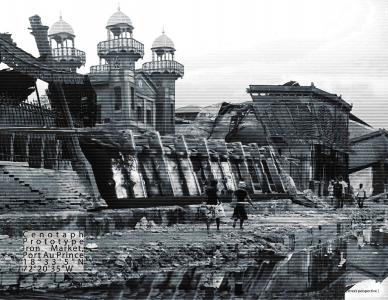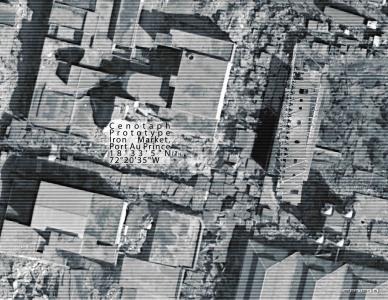| |
Cenotaph I Voodoo Realism
Port-au-Prince, Haiti
Paolo Milanes
Olga Kalosha
Azrieli School of Architecture and Urbanism, Carleton University, Ottawa, Canada
Roger Connah
Full Document (PDF)
Abstract
EVEN IN DISASTER CONDITIONS, dumping the dead in hurriedly excavated mass graves without proper rites is seen as desecration. With so many bodies denied rest in family burial plots, where many rituals take place, countless spiritual connections are severed. Prioritizing survivors is appropriate and necessary but we should not ignore the deceased as their effect reaches past the physical realm. After the 2004 tsunami in Asia, aid groups and governments established a system in which people were photographed before being buried so loved ones could search for them. In Haiti, the system was not implemented; the majority of the dead remain anonymous. The United Nations are asked to set up a death-in-disaster office. This has to be budgeted for as a part of agency’s disaster expenditure. We are proposing an aid department that shall administer this issue during the disaster and in the aftermath processes. The proposed UN Aid Death Department (UNADD) shall be responsible for the corpses of disaster victims in conjunction with rescue teams. Society’s social, psychological, emotional, economic and legal consequences of the disaster shall therefore be approached from the roots - recovery of the dignity for the survivor ’s family. Consideration on a scale larger than a housing/shelter unit is expressed through the inset of local community cenotaphs into the resettling city blocks.
|
| |

image of the settlement
(architectural scale or example of unit)

image of the settlement
(urban scale or group of housing units)

diagram of the actors
involved and the relationships between them |
|



